|
Over the fifteen years that Betamax was manufactured, many improvements and upgrades were incorporated into the basic floor plan. All revolved around the same cassette, same tape path blueprint, and the same superior picture performance that VHS would emulate but never quite duplicate. What this article is going to try and do is clarify why Beta was the better format and why that very fact sealed its eventual failure with consumers. For this discussion I have chosen as my example Betamax the high-quality. basic SL-20. I picked this unit because it was one of the most popular units ever sold. Here I will explain how it worked and what made it so desirable and friendly to use. I will also cover where Beta began the first Betamax (with the SL-7200) and will eventually end up with the last full-feature Betamax, the SL-HF2000. Let the games begin. When Sony introduced the SL-20 in 1984, it was aimed directly at the legions of consumers that wanted to record off-the-air television programs and play prerecorded movies. It was a member of a family of formidable models called the E-Z Beta* VCRs. They were low-profile, simple to understand, and ruggedly built. The easy part was explained in a series of commercials where youngsters showed how simple and uncomplicated it was to use. Remember the "Sony, No Baloney" TV ads? There was a particularly clever add that showed the family dog pulling a cassette off the shelf and placing it in the Betamax. When the puppy pressed play with its nose, the movie "Lassie" began to play on the Sony Trinitron TV set. The message here was, if your dog or kids can use this VCR, surely you, the average consumer, could handle it. The SL-20 was also had a very friendly price, and it came in four different colors (red, silver, deep blue, and black) so it could match any decor. But the best part was Sony hit all the necessary hot buttons to make it foolproof. Slim design, infrared remote, recorded and it played and recorded both  and and  speeds. Plus there was push button tuning, scan in forward and reverse, freeze frame, and 7-day/6-event timer with Quick-Timer. This last feature allowed one to just press a single button to instantly start timer recordings. You could press again and add more time, for up to five hours of recording. At the end of the time period, the recording would stop. This would let you start a recording and then leave, letting the recording continue unassisted. Other nice tidbits just added to the value. Such as a tape counter, fluorescent display, and speeds. Plus there was push button tuning, scan in forward and reverse, freeze frame, and 7-day/6-event timer with Quick-Timer. This last feature allowed one to just press a single button to instantly start timer recordings. You could press again and add more time, for up to five hours of recording. At the end of the time period, the recording would stop. This would let you start a recording and then leave, letting the recording continue unassisted. Other nice tidbits just added to the value. Such as a tape counter, fluorescent display, and  playback, so you could still play your older tapes (if you had any). To make it even better, the SL-20 was built like a tank. When you pulled this baby out of the box, you knew it was a quality product. Let's take a closer look. playback, so you could still play your older tapes (if you had any). To make it even better, the SL-20 was built like a tank. When you pulled this baby out of the box, you knew it was a quality product. Let's take a closer look.ON THE LEFT: 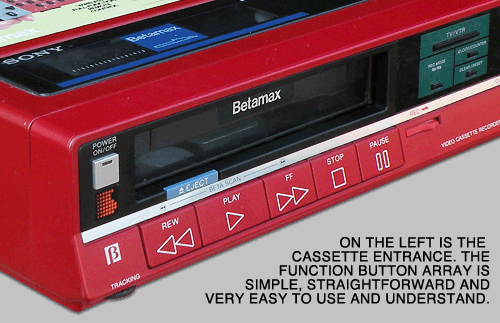 ON THE RIGHT:  IN THE CENTER: 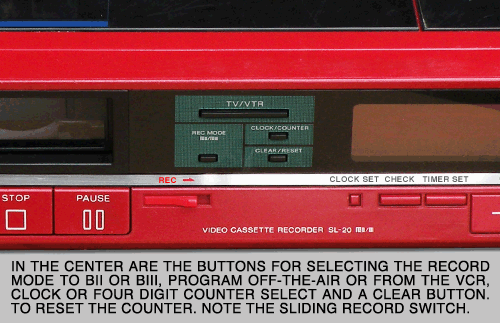 IN THE BACK: 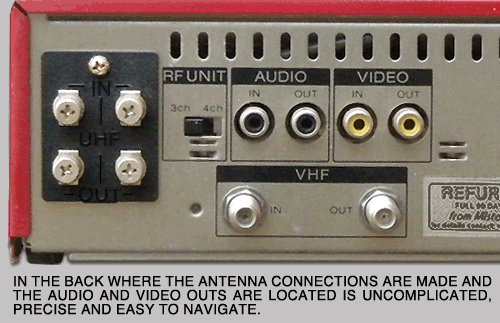 ON THE TOP: 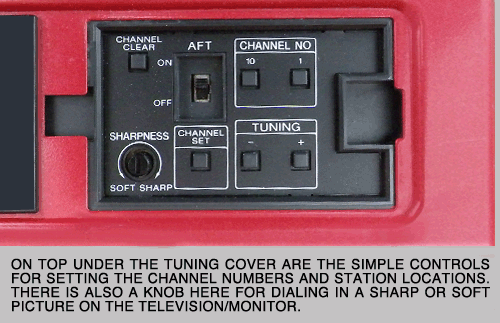 EVERYTHING WAS EXPLAINED IN THE EASY-TO-READ OWNERS MANUAL:  What you haven't seen so far is what's inside. It's the fabulous Beta tape handling system! And that is what I am going to cover next. Because it is at the heart of why Beta is better than VHS. Everything so far has just been excellence and novel exterior design. Now we go inside. ON THE INSIDE: 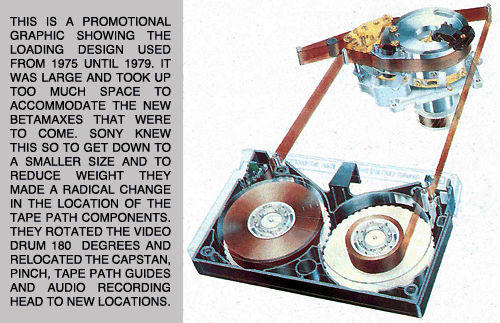 Both designs were great, but the new one gave Beta a formidable weapon in its fight with VHS over quality, performance, and reliability. The new design is illustrated below with VHS shown on the upper right.  THE TWO DESIGNS: 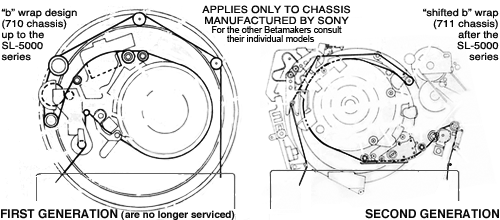 They did this major change while improving Beta's performance, reliability, and operation and at the same time maintaining complete compatibility with the older design. It was truly an engineering wonder. Overall space requirements, weight, and component size was reduced by half. Everything operated well with all that came before it and especially well with those that came after it (in complete harmony). And it is still way better than anything VHS ever came up with. After the success of the SL-20, Sony went on to add more slim cabinet designs an more features and eventually ended up with VCRs that were smarter than the public could comprehend. But if you kept up and stayed with Beta until the end, you had an exceptional journey. To go to the listing for the outstanding SL-20 located in the "Betas For Purchase" section, click here. Note: First design Beta VCRs are no longer serviced by yours truly because they are too old to produce a reliable outcome. *The members of the E-Z Beta family were the: SL-10, SL-20, SL-25, |